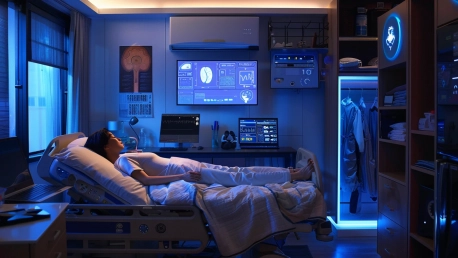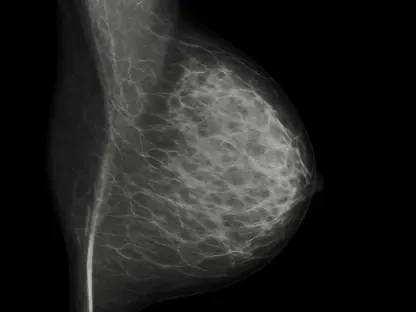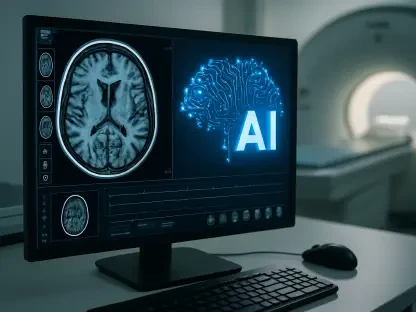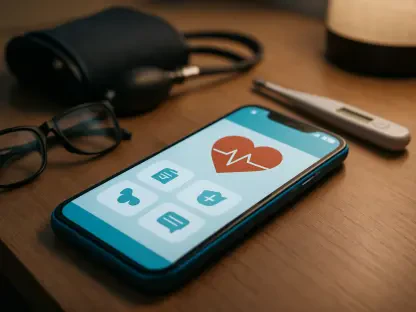The healthcare industry is undergoing a significant transformation fueled by rapid technological advancements. These innovations aim to improve patient care, operational efficiency, and meet the evolving expectations of an increasingly informed and engaged patient base. From artificial intelligence to nanomedicine, each technological stride holds the potential to revolutionize various facets of healthcare. This article explores the top technologies revolutionizing patient care and reshaping the healthcare landscape in 2024, highlighting their impact on diagnostics, treatment, and overall patient experience.
Artificial Intelligence (AI) and Machine Learning (ML) in Healthcare
In recent years, AI and ML have emerged as pivotal technologies in the healthcare sector, particularly in diagnostics and treatment. AI algorithms analyze medical images to detect conditions like cancer at an early stage, enhancing accuracy and enabling timely intervention. Machine learning models predict patient outcomes and recommend personalized treatment plans, ensuring that each patient receives tailored care. The ability to process vast amounts of data quickly and accurately enables healthcare providers to make more informed decisions, ultimately improving patient outcomes.Moreover, AI streamlines operational efficiency by automating administrative tasks. Scheduling patient appointments, managing medical records, and handling billing processes are optimized through AI-driven tools. This automation allows healthcare professionals to focus more on direct patient care, reducing burnout and increasing overall productivity. By minimizing the time spent on repetitive and mundane tasks, AI technologies improve the work-life balance for healthcare providers and enhance the patient care experience. Hospitals and clinics implementing AI solutions are seeing significant improvements in operational efficiency and patient satisfaction.
Cloud Computing: Enhancing Data Storage and Accessibility
Cloud computing offers scalable and secure storage solutions for patient data, facilitating efficient data sharing among healthcare providers. This interoperability is crucial for collaborative care, allowing multidisciplinary teams to access and utilize patient information seamlessly. Physicians, specialists, and other healthcare professionals can work together more effectively, leading to enhanced treatment outcomes. Cloud platforms ensure that critical medical data is available whenever and wherever needed, breaking down barriers to information access.Another significant advantage of cloud computing is cost-effectiveness. By reducing the dependence on expensive on-premises hardware, healthcare facilities can allocate resources more efficiently. This budget reallocation can enhance other areas of patient care, ultimately improving overall service delivery and patient outcomes. Additionally, data security measures in cloud computing are continuously advancing, ensuring that patient information remains confidential and protected against cyber threats. As healthcare continues to evolve, cloud computing will play an increasingly central role in data management and accessibility.
Internet of Medical Things (IoMT): Revolutionizing Continuous Monitoring
The Internet of Medical Things (IoMT) encompasses a vast network of connected devices, including wearables and home monitoring systems. These devices collect real-time health data, providing physicians with continuous insights into a patient’s condition. For example, glucose monitors for diabetes patients enable constant monitoring and prompt adjustments to treatment plans based on the data collected. This real-time data collection allows for more proactive and personalized healthcare, improving patient outcomes and overall well-being.IoMT not only aids in personalized care but also empowers patients to take an active role in managing their health. With access to their own health data, patients can make informed decisions about lifestyle changes and treatment strategies. Wearable devices like fitness trackers encourage patients to engage in healthier behaviors and actively monitor their progress. This empowerment leads to better patient engagement and adherence to treatment plans, ultimately resulting in improved health outcomes. IoMT represents a shift towards more patient-centric healthcare, where individuals have greater control over their health and well-being.
Augmented Reality (AR), Virtual Reality (VR), and Mixed Reality (MR) in Medical Training and Patient Care
AR, VR, and MR are transforming medical training by providing immersive learning experiences. Medical professionals can practice complex surgical procedures in a virtual environment, reducing errors and improving their proficiency without putting real patients at risk. This hands-on training approach is enhancing the skill set of healthcare practitioners and ensuring better patient outcomes. Virtual simulations allow for repetitive practice, enabling healthcare providers to refine their techniques and build confidence before performing actual procedures.These technologies are also being integrated into patient care. AR-assisted surgeries, for instance, offer enhanced visualization, allowing surgeons to perform with greater precision. By overlaying digital information onto the physical world, AR provides real-time guidance during complex procedures. Additionally, VR therapy is becoming a valuable tool in pain management and mental health treatments. Patients can immerse themselves in virtual environments to alleviate pain, reduce stress, and manage mental health conditions effectively. These innovative methods offer new possibilities for patient care and treatment, enhancing the quality of healthcare services.
Big Data Analytics: Unleashing the Power of Data
Big data analytics is revolutionizing healthcare by enabling the analysis of vast datasets from electronic health records (EHRs), wearable devices, and genomic data. This comprehensive data analysis identifies patterns and trends that are crucial for accurate diagnoses and personalized treatment plans. The ability to interpret large volumes of data ensures that healthcare providers can make informed decisions based on robust evidence. Predictive analytics can forecast disease outbreaks, identify high-risk patients, and optimize resource allocation, significantly improving public health management.On a broader scale, big data analytics plays a vital role in population health management. By tracking disease outbreaks and assessing risk factors, healthcare organizations can develop targeted preventive strategies. This proactive approach helps in managing public health crises more effectively and improves overall community health. Governments and healthcare institutions can use big data insights to implement policies and interventions that address specific health challenges, ultimately leading to healthier populations. The power of big data lies in its ability to provide actionable insights that drive better healthcare outcomes and enhance overall health system performance.
Telemedicine and Telehealth: Bridging the Gap in Healthcare Accessibility
Telemedicine and telehealth services have gained significant traction, particularly during the COVID-19 pandemic. These technologies facilitate remote consultations, allowing patients to receive healthcare services without the need for physical visits. Telemedicine breaks geographical barriers, ensuring that individuals in remote or underserved areas have access to quality healthcare. Patients can connect with healthcare providers from the comfort of their homes, making healthcare more accessible and convenient.Apart from increased accessibility, telemedicine offers convenience for patients with mobility issues or those who prefer not to travel. Remote monitoring tools and virtual consultations enable continuous care management, making healthcare more patient-centric and efficient. Chronic disease management, mental health services, and follow-up consultations are just a few examples of the diverse applications of telemedicine. By integrating telehealth solutions, healthcare providers can expand their reach, improve patient satisfaction, and deliver care more effectively. The rise of telemedicine represents a significant shift towards a more flexible and accessible healthcare system.
Nanomedicine: Precision in Drug Delivery and Early Disease Detection
Nanomedicine leverages nanotechnology to enhance drug delivery and disease detection. Nanobots can precisely target affected cells, delivering medication directly to the site of illness while minimizing side effects. This targeted approach improves the efficacy of treatments and reduces the risk of adverse reactions. Nanomedicine offers a new level of precision in treating various medical conditions, from cancer to cardiovascular diseases, by ensuring that medication is delivered exactly where it is needed.Additionally, nanotechnology is used in diagnostic tools to detect diseases at their earliest stages. Early detection allows for prompt medical intervention, significantly improving patient prognosis and reducing the long-term impact of diseases. Nanoprobes, for example, can detect biomarkers associated with specific diseases, enabling early diagnosis and timely treatment. The potential of nanomedicine extends beyond drug delivery and diagnostics to include areas like tissue engineering and regenerative medicine. As research and development in this field continue to advance, nanomedicine promises to revolutionize healthcare with its precision and efficacy.
Robotics and Automation: Precision and Efficiency in Healthcare
Robotic-assisted surgeries are a prime example of how robotics is enhancing healthcare. These surgeries offer higher precision, minimal invasiveness, and shorter recovery times. Robots assist surgeons in performing intricate procedures with greater accuracy, leading to better patient outcomes and reduced post-operative complications. Robotic systems provide enhanced dexterity and control, allowing surgeons to perform complex maneuvers with ease. Patients benefit from reduced pain, faster recovery, and improved surgical results.Automation extends beyond the operating room to administrative tasks. Automated systems handle patient check-ins, inventory management, and appointment scheduling, streamlining operations and reducing the administrative burden on staff. By automating routine tasks, healthcare facilities can improve efficiency and allocate more resources to patient care. The integration of robotics and automation in healthcare not only enhances operational efficiency but also improves the overall patient experience. As these technologies continue to evolve, their impact on healthcare will grow, offering new opportunities for precision, efficiency, and innovation.
Conclusion
The healthcare industry is experiencing a profound transformation driven by rapid technological advancements. These innovations aim not only to enhance patient care and operational efficiency but also to meet the rising expectations of a well-informed and engaged patient population. From the integration of artificial intelligence to advancements in nanomedicine, every technological leap has the potential to revolutionize various aspects of healthcare.For instance, artificial intelligence can analyze vast amounts of medical data to support diagnosis and treatment plans, while telemedicine offers unprecedented access to healthcare services, especially for those in remote areas. Nanomedicine, with its precision at the molecular level, promises groundbreaking treatments that were once thought impossible.In 2024, the healthcare landscape will be markedly different, with these technologies leading the charge in diagnostics, treatment, and overall patient experience. This article delves into the top technologies reshaping patient care, highlighting their impact on healthcare delivery and the quality of patient outcomes. By understanding these innovations, healthcare professionals and patients alike can better navigate the evolving landscape of modern medicine.









